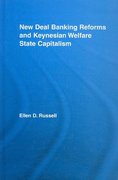Question
Need to solve the exercise 17.5 from the Recursive macroeconomic theory by Lars Ljungqvist. Exercise 17.5 TradejQuery2240583310651680935_1616879480665 A consumer orders consumption streams according to 1
Need to solve the exercise 17.5 from the Recursive macroeconomic theory by Lars Ljungqvist.
Exercise 17.5TradejQuery2240583310651680935_1616879480665
A consumer orders consumption streams according to
1
(1)E0
t ct,(0, 1)
t=01
where > 1 and E0 is the mathematical expectation conditional on time 0 information. The consumer can borrow or lend a one-period risk-free security that bears a xed rate of return of R = 1 . The consumer's budget constraint at time t is
(2)ct + R1bt+1 = yt + bt
where bt is the level of the asset that the consumer brings into period t . The household is subject to a"natural" borrowing limit. Thehousehold's initial asset level is b0 = 0 and his endowment sequence yt follows the process
(3)yt+1 = yt exp(t+1 + )
where t+1 is an i.i.d. Gaussian process with mean zero and variance 1 , =
.52 , and > 0 . The consumer chooses a process {ct, bt+1}
to maximize
(1) subject to (2), (3), and the natural borrowing limit.
t=0
a.Give a closed-form expression for the consumer's optimal consumption and asset accumulation plan.
Hint 1: If log x is N (, 2), then Ex = exp( + 2/2).
Hint 2: You could start by trying to verify the following guess: the optimal policy has bt+1 = 0 for all t 0.
b.Discuss the solution that you obtained in part a in terms of Friedman's permanent income hypothesis.
c.Does the household engage in precautionary savings?
Step by Step Solution
There are 3 Steps involved in it
Step: 1

Get Instant Access to Expert-Tailored Solutions
See step-by-step solutions with expert insights and AI powered tools for academic success
Step: 2

Step: 3

Ace Your Homework with AI
Get the answers you need in no time with our AI-driven, step-by-step assistance
Get Started


